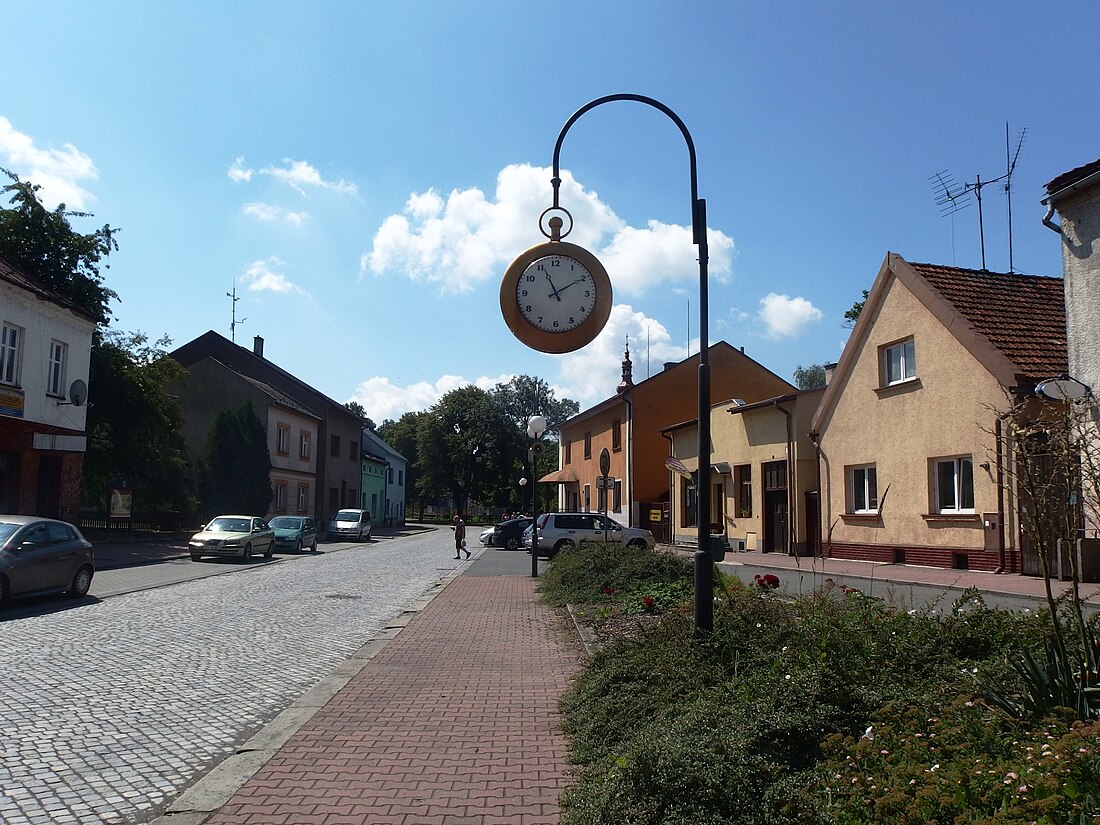Top Qs
Timeline
Chat
Perspective
Paskov
Town in Moravian-Silesian, Czech Republic From Wikipedia, the free encyclopedia
Remove ads
Paskov is a town in Frýdek-Místek District in the Moravian-Silesian Region of the Czech Republic. It has about 3,900 inhabitants.
Remove ads
Administrative division
Paskov consists of two municipal parts (in brackets population according to the 2021 census):[2]
- Paskov (3,390)
- Oprechtice (289)
Geography
Paskov is located between Ostrava and Frýdek-Místek, in close proximity to both cities. It lies in a flat landscape in the Ostrava Basin. The town is situated at the confluence of the Ostravice river and the Olešná stream.
History
The first written mention of Paskov is in a deed of bishop Bruno von Schauenburg from 1267. At the end of the 13th century, a fortress was built here. Until 1538, the village was a fief of the Olomouc bishophric. In 1538, Paskov was acquired by Jan IV of Pernštejn. In the following decades, it often changed hands.[3]
The municipality became a town in 2011.[4]
Demographics
Economy
Paskov was known for the Paskov Mine, where hard coal was mined from 1966 to 1999.[7]
The town is known for the industrial company Lenzing Biocel Paskov, a pulp producer which employs about 400 people.[8]
Transport
The D56 motorway from Ostrava to the Frýdek-Místek runs next to the town.
The train station named Paskov is located in the territory of neighbouring Řepiště. It lies on the railway line Ostrava–Frenštát pod Radhoštěm.[9]
Sights

The main landmark is the Paskov Castle. The local fortress was rebuilt into a Renaissance residence in the late 16th century. After the damage suffered in the Thirty Years' War, it was reconstructed in the Baroque style. The castle was nationalised after World War II and from 1950 to 2004 it housed an oncology hospital. Since 2013, the castle complex with a naturally valuable part of the castle park has been owned by the town. Today the building houses a museum and serves cultural and social purposes.[3]
The Baroque complex of the Church of Saint Lawrence was built in 1740–1746 and expanded in 1828.[10]
Remove ads
Notable people
- Edmund Reitter (1845–1920), Austrian entomologist, writer and collector; died here
- Bohumír Dvorský (1902–1976), painter
- Zdeněk Koubek (1913–1986), track athlete and rugbist
References
External links
Wikiwand - on
Seamless Wikipedia browsing. On steroids.
Remove ads




